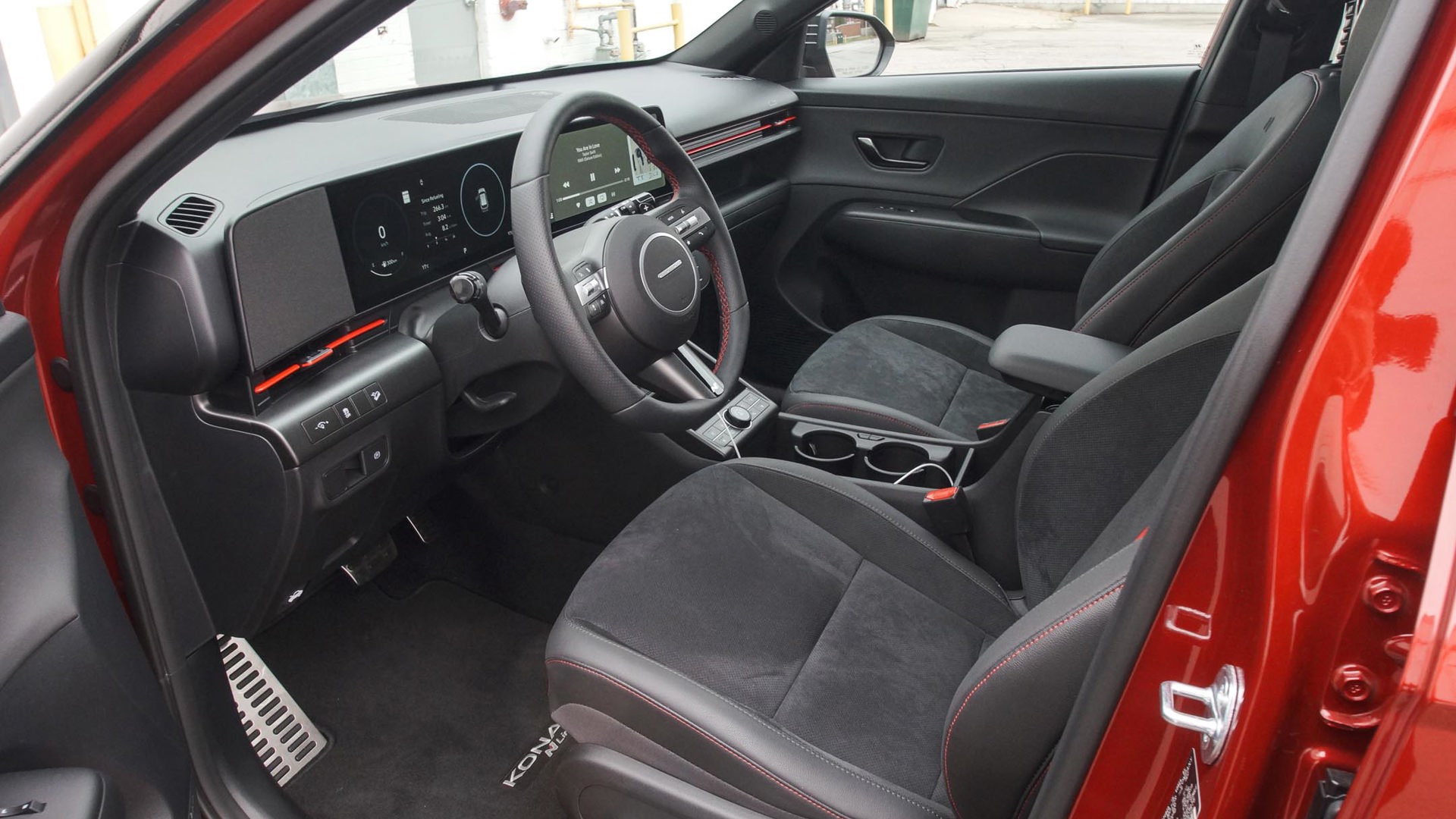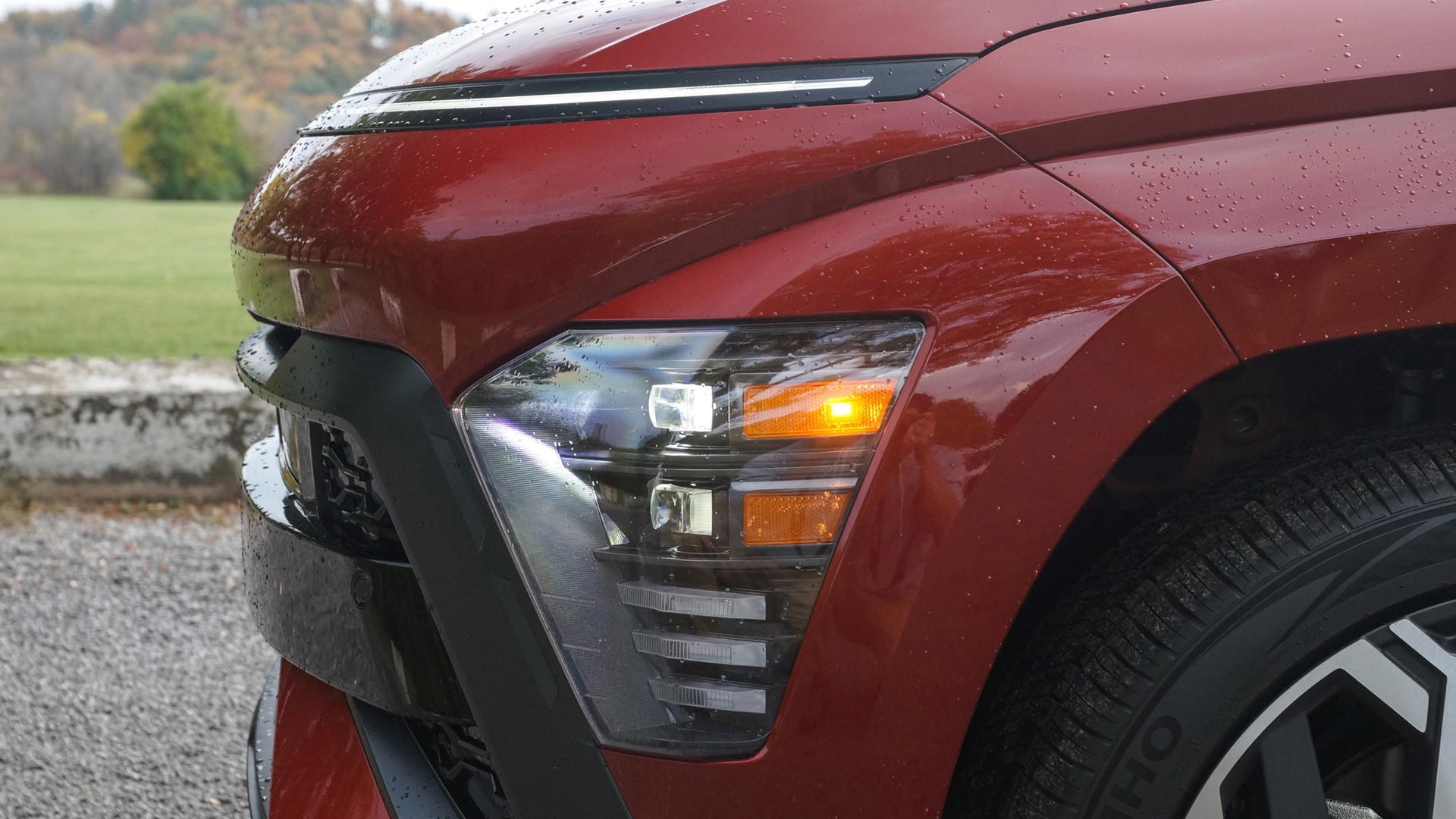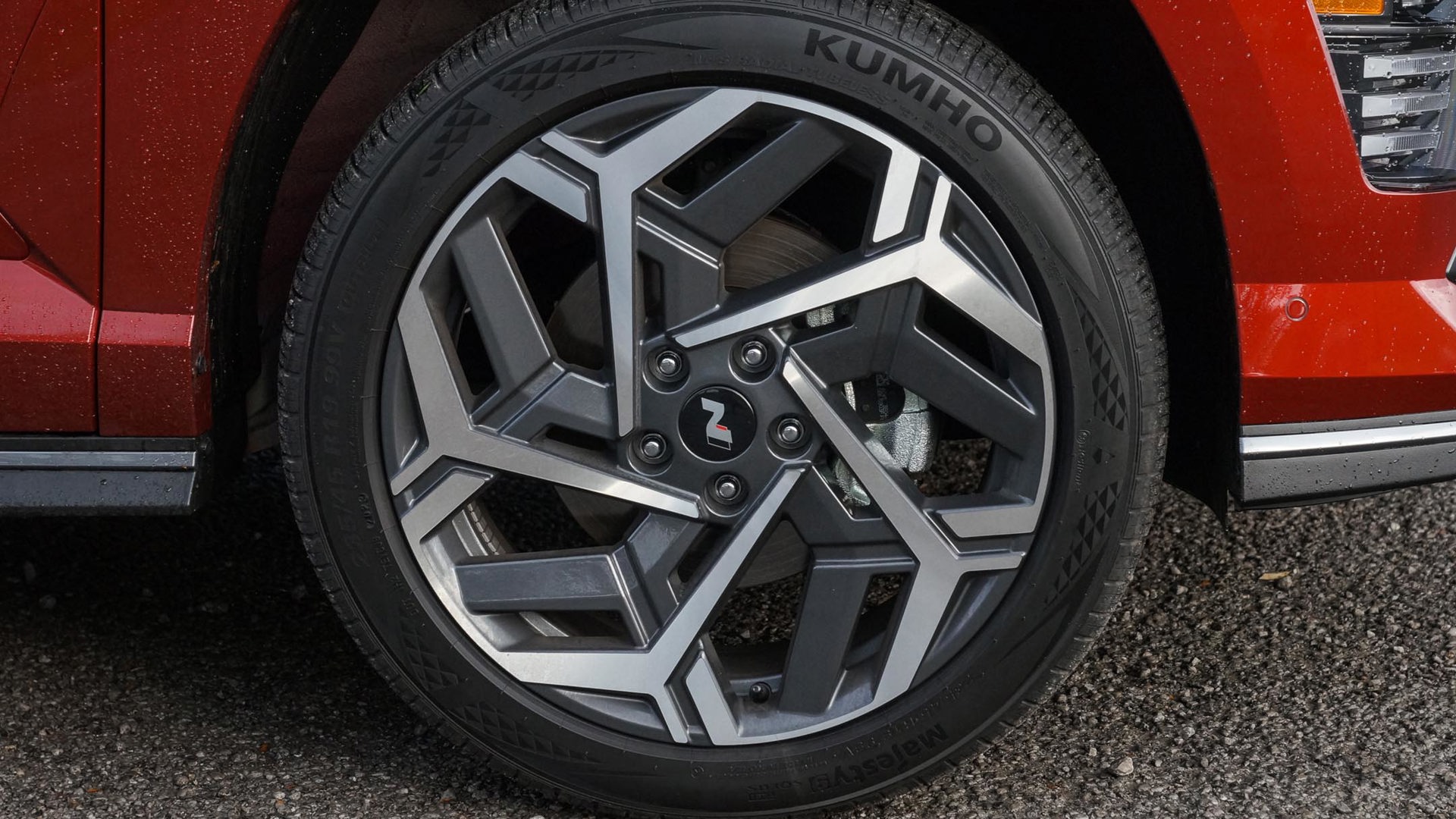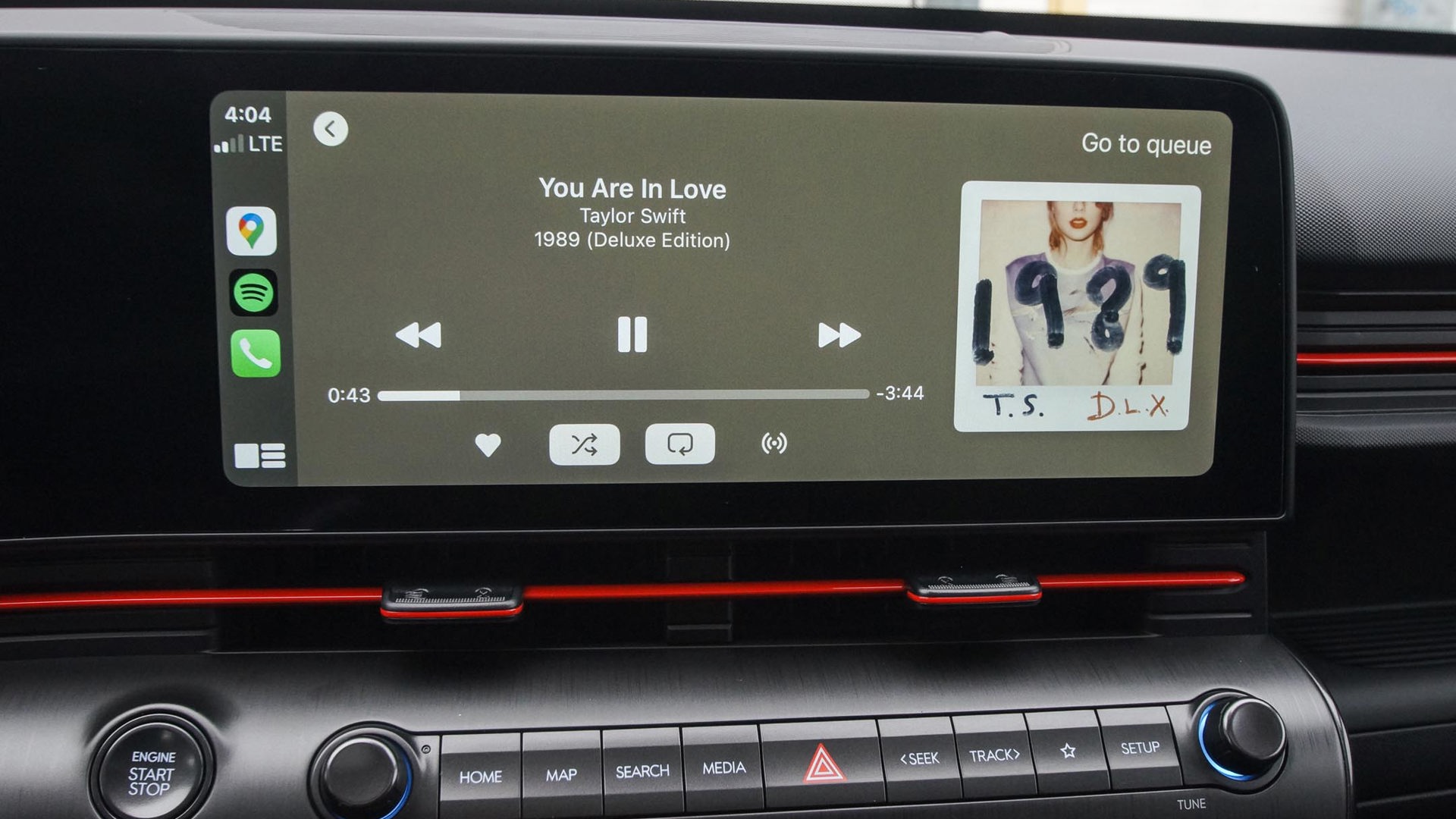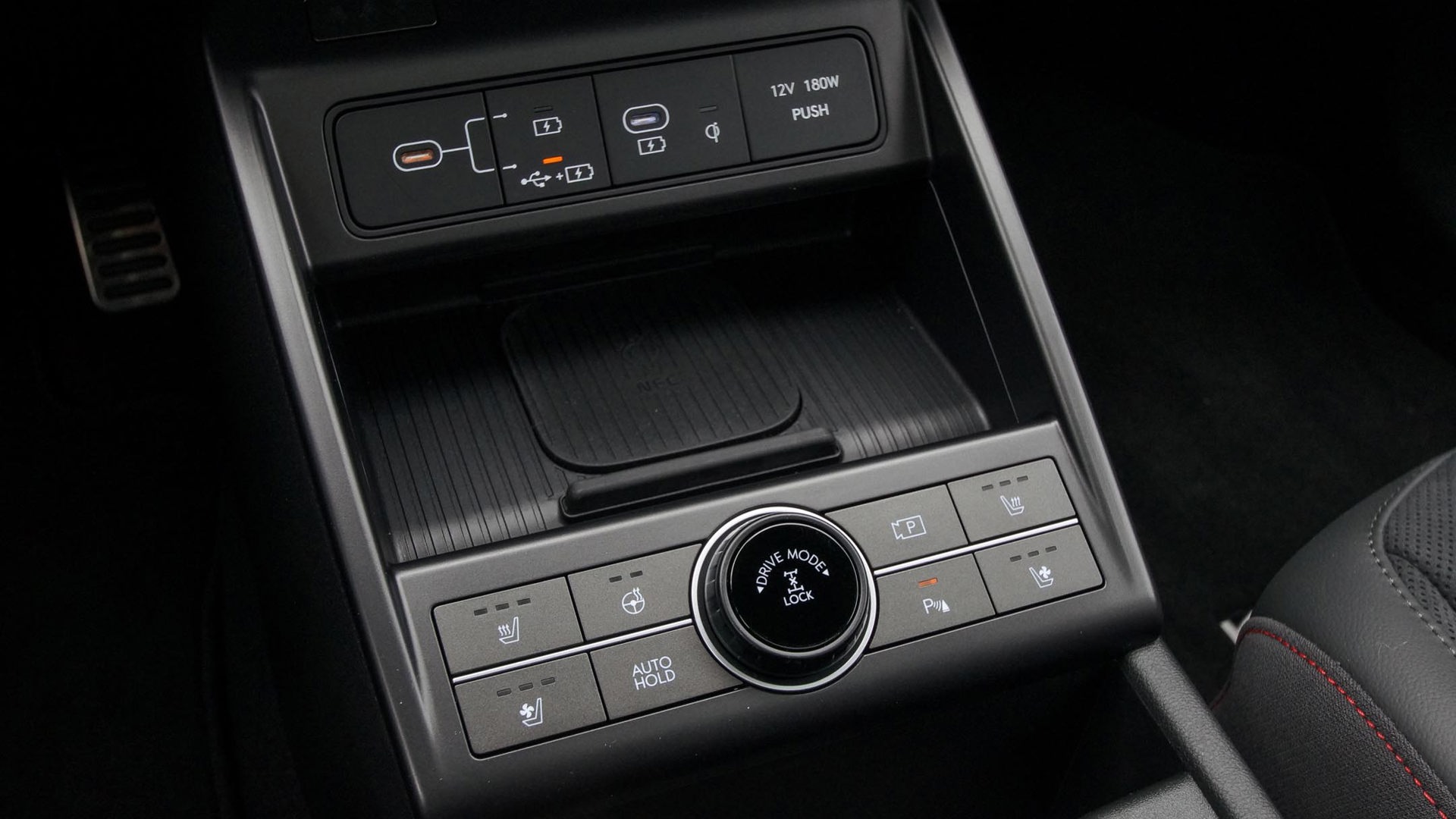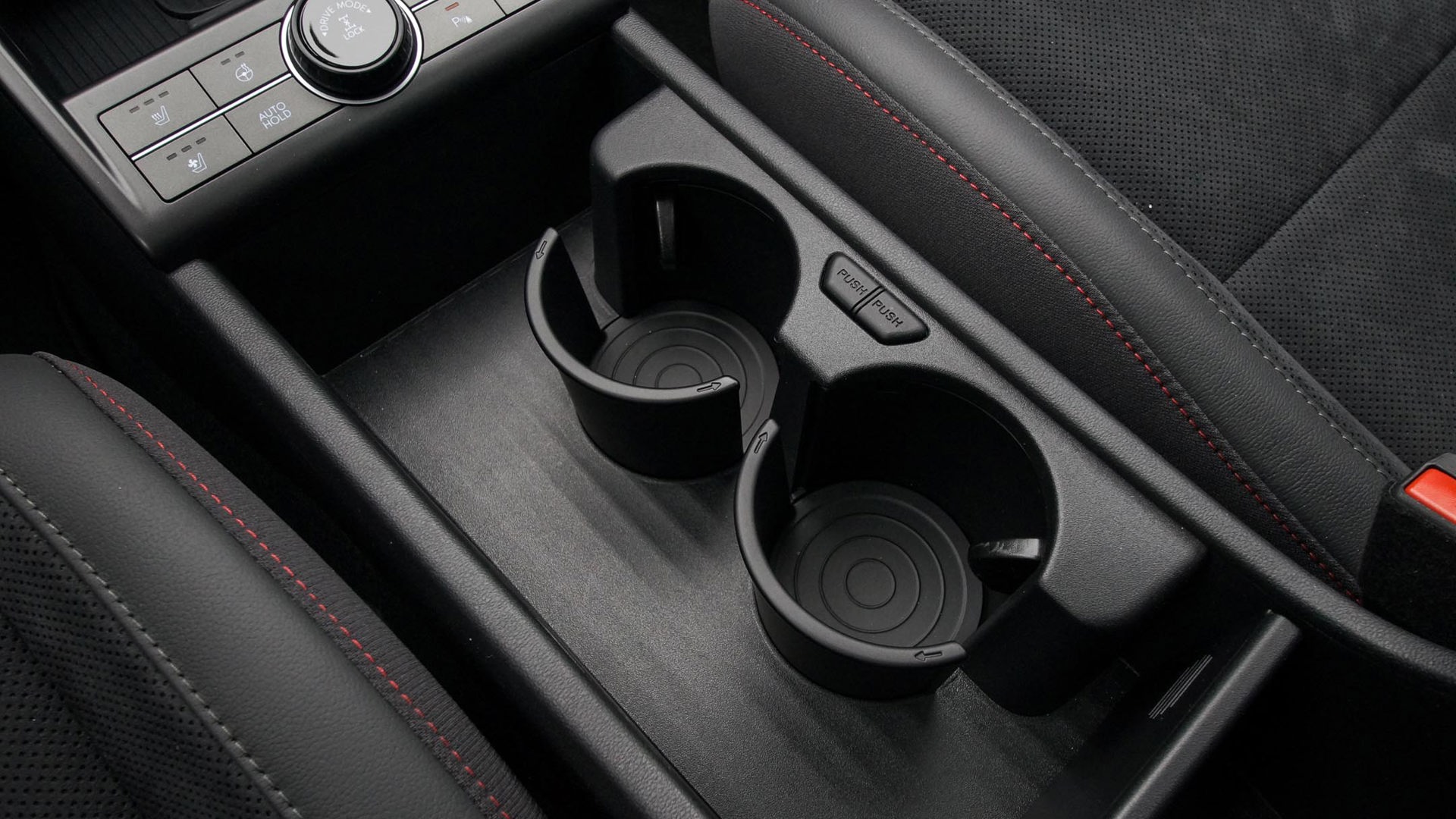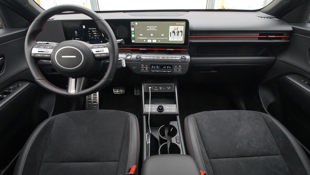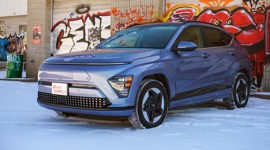 AutoTrader SCORE
AutoTrader SCORE
-
STYLING7/10
-
Safety9/10
-
PRACTICALITY9/10
-
USER-FRIENDLINESS8/10
-
FEATURES10/10
-
POWER8/10
-
COMFORT8/10
-
DRIVING FEEL8/10
-
FUEL ECONOMY8/10
-
VALUE7/10
The redesigned 2024 Hyundai Kona is bigger than before both inside and out, adding appreciable practicality – primarily in the cargo area.
As with the previous generation, it brings bold styling that borders on polarizing, which is enough to set it apart from other blander subcompact crossovers. That combination of extra space and out-there styling only improves on what has made the Kona a smash hit since its introduction.
Styling: 7/10
The 2024 Kona retains a similar look to the version that came before it, albeit with a more rounded treatment. A new LED light bar spans the entire front end, giving this crossover more than a passing resemblance to a certain Star Trek character. The rest of the Kona carries on the same design language, with plenty of lines and creases that culminate in another horizontal LED strip around back. The sporty N Line version gets an aggressive spoiler above the rear hatch, adding to the sci-fi look.
Safety: 9/10
The Kona comes with forward collision warning that includes pedestrian and cyclist detection, an excellent lane-keeping/following assist system, blind-spot monitoring with rear cross-traffic alert, automatic high beam control, and adaptive cruise control. For parents of little ones who still need to be strapped into child seats, anchor points are easy to access.
The N Line trim and its optional Ultimate package ($3,000) gets Hyundai’s enhanced adaptive cruise control called Highway Driving Assist. The system can adjust the vehicle’s speed based on navigation data, as well as providing steering and lane-change assistance. The Ultimate also gets parking sensors all around, low-speed reverse automatic braking, camera-based blind-spot monitoring, and surround-view monitoring.
Features: 10/10
As the top dog Kona, the N Line is decked out with features. This flagship trim gets 19-inch alloy wheels, a heated steering wheel, rain-sensing wipers, leather and suede seating surfaces, heated and ventilated front seats, an eight-way power-adjustable driver’s seat, wireless phone charging, and two 12.3-inch screens – one for instrumentation and the other for infotainment. The Ultimate package adds an auto-dimming rearview mirror, an upgraded stereo, and built-in navigation.
User-Friendliness: 8/10
After a brief familiarization with the controls, the Kona is a straightforward crossover to live with daily. Like Hyundai’s current crop of electric vehicles (EVs), the gear selector sprouts out of the steering column and is twisted in the desired direction of travel to engage drive or reverse. This theoretically frees up the centre console for plenty of storage, but in practice the spring-loaded cup holders kill most of the potential usable volume when in use. On the bright side, there are plenty of physical controls for primary functions such as climate and audio.
Hyundai’s infotainment system continues to be one of the best in the business as far as ease of use. While it’s a little more complex than it used to be, the menu systems remain mostly the same, and the 12.3-inch touchscreen is sharp and stays legible in direct sunlight. Unfortunately, wireless Apple CarPlay and Android Auto functionality aren’t compatible with the Ultimate package’s onboard navigation, meaning both are wired at the very top of the lineup.
Practicality: 9/10
With the 2024 Kona stretched 171 mm (6.7 in) overall, and its wheelbase measuring 60 mm (2.4 in) longer than before, it’s no wonder it has leaps and bounds more rear passenger and cargo space inside. Where the old Kona struggled to accommodate much of anything behind the front seats, at 723 L, the new one swallows one-third more cargo volume with the back seats up. Rear legroom improves by 76 mm (three in), with smaller gains in shoulder- and headroom.
These improvements make all the difference in accommodating a child seat and stroller. A 10.6-metre (34.8-ft) turning circle means that the Kona can make U-turns where others have to settle for three-pointers. Despite the larger footprint, it’s still a subcompact crossover that’s easy to see out of, manoeuvre, and park.
Comfort: 8/10
With its longer wheelbase, the Kona rides reasonably well, but the 19-inch alloy wheels make things a little firmer by giving up some of the cushion afforded by a thicker tire. On the highway, noise, vibration, and harshness is all well-controlled, and while it won’t be mistaken for a luxury vehicle, it isn’t a penalty box, either.
Although overall interior functionality is a high point, much of the plastics used inside are underwhelming. However, Hyundai didn’t skimp on the feel of the leather-wrapped steering wheel, gear selector, and infotainment buttons – all items drivers will touch most frequently.
Otherwise, the suede-leather mix of seating surfaces in the N Line is nice, and the eight-way power driver’s seat helps to cut down on soreness and fatigue on long trips. The climate control system features a three-setting maximum fan limit, which is useful when different fan speeds are desired in auto mode. Rear-seat passengers get fold-down cup holders in the rear seat armrest and a pair of USB-C charging ports at the back of the centre console.
Power: 8/10
Engine and transmission options mostly carry over for 2024, with one notable exception. For the N Line and its 1.6L turbocharged four-cylinder, the less refined seven-speed dual-clutch automatic transmission (DCT) is gone in favour of a more conventional eight-speed unit. For the 1.6L, horsepower is down by five to 190, but the same 195 lb-ft of torque is available over a usable rpm range between 1,700 and 4,500 rpm. Lower trims use a non-turbo 2.0L engine with a modest 147 hp and 132 lb-ft of torque, coupled to an automatic continuously variable automatic transmission (CVT).
Driving Feel: 8/10
The 1.6L turbocharged Kona N Line turns the performance up a few notches over the base model, but no particular aspect burns too brightly. More usable torque when going from stoplight to stoplight is emphasized over high-speed passing power, which is more beneficial for city driving. With the relatively low displacement, the engine does take a second to get going when the throttle is applied, but pulls like a freight train after a moment or two. The new eight-speed automatic is much less jerky at low speeds, and the quick shifts are nearly as good as the old dual-clutch in between gears.
The all-wheel drive system offers solid traction in challenging conditions, handling and power delivery are well-balanced, and decent steering and brake feel make the daily commute more enjoyable. It won’t win any performance awards, but it’s appropriate for a more toned-down N Line moniker.
Fuel Economy: 8/10
Natural Resources Canada (NRCan) fuel economy ratings are 9.7 L/100 km in the city and 8.3 on the highway, with a combined rating of 9.1. After a week of testing, observed consumption came in at 8.4 L/100 km in mostly highway driving. Even with a small displacement engine with a turbocharger, regular fuel is acceptable.
Compared to other choices in this segment, the Kona is right in the middle: the less powerful Subaru Crosstrek Wilderness has an 8.8 L/100 km combined rating, and the more powerful Mazda CX-30 Turbo comes in at 9.3. The Toyota Corolla Cross Hybrid gets 5.6.
Value: 7/10
The Kona N Line starts at $37,524, including destination, and the $3,000 Ultimate package brings the as-tested price of this particular unit to just over $40,000. In addition to the Subaru, Mazda, and Toyota models mentioned earlier, the Honda HR-V and Kia Seltos are all very close to the Hyundai in terms of pricing for their top trims. The Seltos and Kona tend to boast more features and gadgets, and the Kona edges out its compatriot based on having newer underpinnings; the Seltos is based on the outgoing Kona.
The Verdict
With vastly improved cargo and rear seat capacity, the 2024 Hyundai Kona is a good choice as a fun-yet-comfortable do-it-all small crossover, but lower trims will be the best bang for the buck. When pitting the N Line Ultimate against its main peers, the Subaru Crosstrek Wilderness goes for rugged over sporty, the Mazda CX-30 will have sharper driving feel, and the Honda HR-V falls somewhere in between.
| Engine Displacement | 1.6L |
|---|---|
| Engine Cylinders | Turbo I4 |
| Peak Horsepower | 190 hp @ 6,000 rpm |
| Peak Torque | 195 lb-ft @ 1,700–5,400 rpm |
| Fuel Economy | 9.7 / 8.4 / 9.1 L/100 km cty/hwy/cmb |
| Cargo Space | 723 / 1,803 L seats up/down |
| Model Tested | 2024 Hyundai Kona N Line Ultimate |
| Base Price | $35,499 |
| A/C Tax | $100 |
| Destination Fee | $1,925 |
| Price as Tested | $40,524 |
|
Optional Equipment
$3,000 – Ultimate Package, $3,000
|
|




